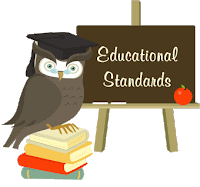For a very long time, our country has maintained a
hodgepodge of educational expectations for students, often not even coming
close to the standards of other developed countries. The Common Core State Standards Initiative (CCSSI) is composed of a panel of educators convened by the nation’s governors and
state school superintendents who are working to create benchmarks to bring all
areas of the country in alignment with the same expectations. As reported by TheNew York Times, these are not without controversy. Alaska and Texas declined to participate
in the standards-writing effort, arguing that they should decide locally what
their children learn. After viewing the proposed standards, some states, like
Massachusetts, may oppose the proposed national standards because state
educators feel that they already have higher standards in place and may want to
keep those.
Although the implementation of high academic standards is
probably a good thing for our country in general, we must also be careful that
the standards (if accepted by states) do not limit the learning of gifted
students. It would be impractical to set a unique set of standards for the
gifted population because these students fall on a long continuum of abilities.
Instead, it is best to think of any national standards as a baseline of
expectations, allowing more capable students to progress much more quickly and
in greater depth.
In 1998 the National Association for Gifted Children (NAGC)
developed and released the Pre-K - Grade 12 Gifted Program Standards
designed to assist school districts in examining the quality of their programming
for gifted learners. These are standards for creating and maintaining effective
gifted programming in schools. At the very least, these gifted program
standards should be implemented in addition to the national educational
standards. The NAGC standards include:
- program design,
- program administration and management,
- student identification,
- curriculum and instruction,
- socio-emotional guidance and counseling,
- professional development, and
- program evaluation.
Students who are capable should not be held back by any
standards set for the general population; instead, they should be allowed and
encouraged to move beyond those general standards.

No comments:
Post a Comment
Your comments will be available after approval.